
| Getting There |
|
 View over Singapore old and new |
|
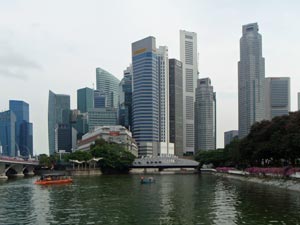 The "new" Singapore - a modern financial and trade hub |
 The "old" Singapore - Raffles Hotel |
 Sitting on the southern tip of the Asian continent |
    |
||
Some Classic Turkish Tourism
Istanbul |
|||
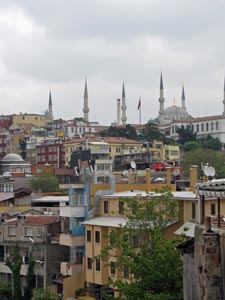 View from our hostel over old Istanbul |
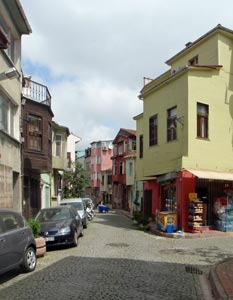 The streets of the old quarter in Istanbul |
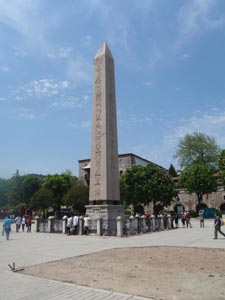 The Obelisk in Meydani Square |
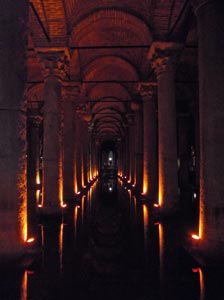 In the 6th century underground cistern |
|
|
|
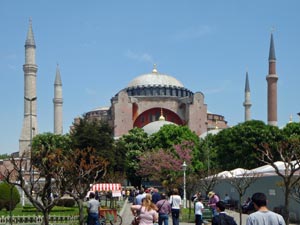 Exterior of the 1500 year-old Aya Sofia |
 The 17th century Sultan Ahmet Camii (aka The Blue Mosque) |
|
|
 The domes of the Blue Mosque |
||
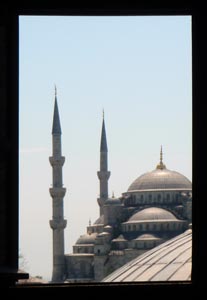 View of the Blue mosque from a window of Aya Sofia |
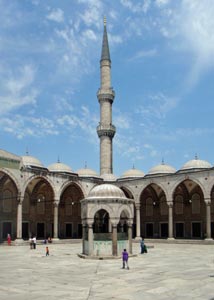 Courtyard of the Blue Mosque |
 Cloister in the Blue Mosque courtyard |
|
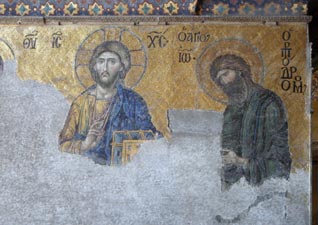 Gilded mural in the Aya Sofia |
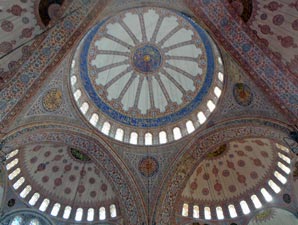 A curious view of the domes of the Blue Mosque |
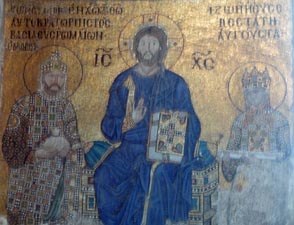 Another example of the murals of the Aya Sofia |
After an early night and good sleep, we were a bit brighter the next day and took on the challenge of wandering through the alleyways of the Grand Bazaar to hone our skills at carpet-purchase-avoidance (we were actually surprised that the bazaar was more hassle-free than expected). Descending through the mayhem of a busy morning in the shops of the old part of the city, we checked out the spice bazaar where we made our only big purchase - 2 liras worth of Turkish Delight! From here we wandered over the bridge across the Golden Horn, lined with fisherman who were catching bucket-loads of what appeared to be large sardines, to climb up to the 15th century Galata Tower for a grand panorama of the city and the Bosphorus.
|
|
|
|
 Grey day on the Sea of Marmara |
|
|
|
We spent an interesting few hours wandering amongst the crumbling edifices of ancient Ephesus, founded 3000 years ago by the Greeks, ruled by the Persians, expanded by the Romans into the greatest city of Anatolia, fought over by the Byzantines and Turks and finally brought down by nature itself, as its port silted up and left it without a purpose.
|
|
It was well worth a visit and, as we walked back from the ruins of the city to Selçuk, we stopped at the site of the Temple of Artemis, once one of the seven wonders of the world, now with only one of its 126 pillars remaining in a boggy field. Ephesus is a monument to the glory of ancient civilisations and the ultimate futility of human striving for immortality. The stork's nest on the top of that single remaining pillar said it all.
Pamukkale - the cotton castle |
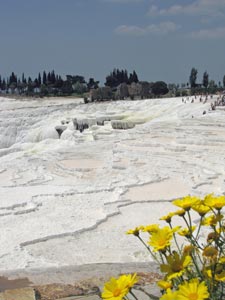 Pamukkale - the cotton castle |
The following day was a long trip from Selçuk to Antalya, via several buses large and small. We headed off from Selçuk, up the rich flats of the Meander Valley, past orchards, vegetable crops and strawberry fields, and through towns where every roof supported a cluster of solar water heaters and satellite dishes.
|
 The intense colours of Pamukkale |
Our destination was Pamukkale, for a 4-hour stopover to visit the famous calcified travertine steps and nearby ruins of the ancient Greek city of Hieropolis. |
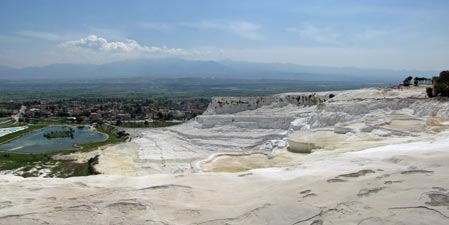 The travertine steps of Pamukkale |
|
 A lone pillar of Hieropolis |
|
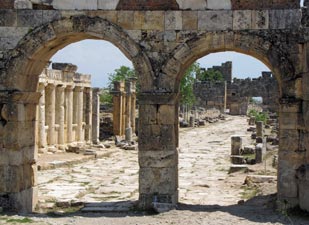 The Domitian Gate - entry to the main street of Hieropolis |
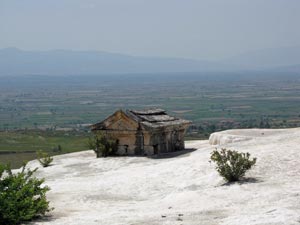 Ancient sarcophage engulfed by the flow |
|
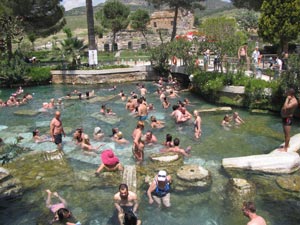 Why we didn't swim in Cleopatra's Pool |
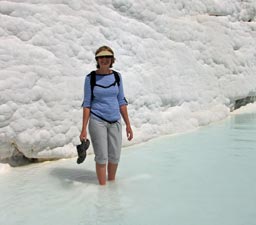 |
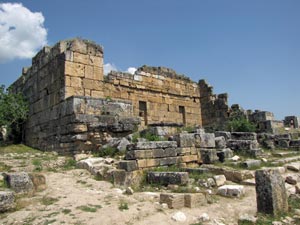 Ruins of The Plutonium |
|
||